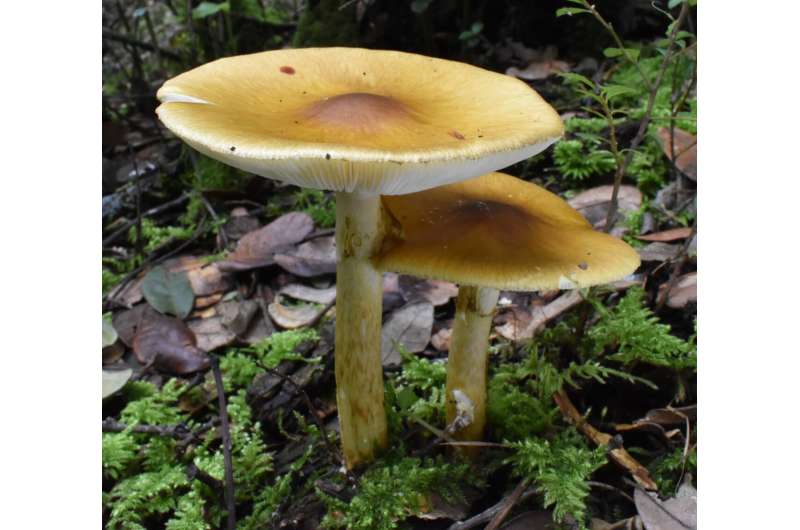May 10, 2022 report
Distantly related mushrooms gained the ability to make toxin via horizontal gene transfer

A team of researchers affiliated with several institutions in China and the U.S. has found evidence that suggests three distantly related types of mushrooms gained their ability to produce a dangerous toxin via horizontal gene transfer sometime in their past. In their paper published in Proceedings of the National Academy of Sciences, the group describes their genetic analysis of multiple species of mushrooms to determine which genes in three particular species were responsible for producing the same toxin and what it showed them about its origins.
Scientists have known for some time that the three mushrooms—the deadly dapperling, the destroying angel and the funeral bell—are not only toxic, but also have an identical toxin. Some scientists assumed they must have a common ancestor, but the researchers in this new effort suspected something else was afoot because the three species are so distantly related. To get to the bottom of the matter, they obtained samples of the three mushrooms along with samples from 12 others.
To find out which part of their genome was responsible for making the toxins, the researchers sequenced all of their samples. They found two genes that were responsible for creating the toxins and were identical in all three species. A closer look at the genes showed that they were, indeed, distantly related, but it also showed that the genes responsible for producing the toxins were not passed down from a common ancestor. That left just one other possibility—sometime in their past, all three had received a horizontal gene transfer from another, possibly extinct, mushroom.
A horizontal gene transfer occurs when a third party, such as a bacterium, absorbs some of the genome of a host it is infecting and then passes those cells into another host that it infects. The researchers note that horizontal gene transfer is common with bacteria. In many cases, they steal bits of host DNA, add it to their own, and then pass it on to their offspring. Those offspring can then add the new DNA to cells they infect in another host.
More information: Hong Luo et al, Genes and evolutionary fates of the amanitin biosynthesis pathway in poisonous mushrooms, Proceedings of the National Academy of Sciences (2022). DOI: 10.1073/pnas.2201113119
Journal information: Proceedings of the National Academy of Sciences
© 2022 Science X Network

















